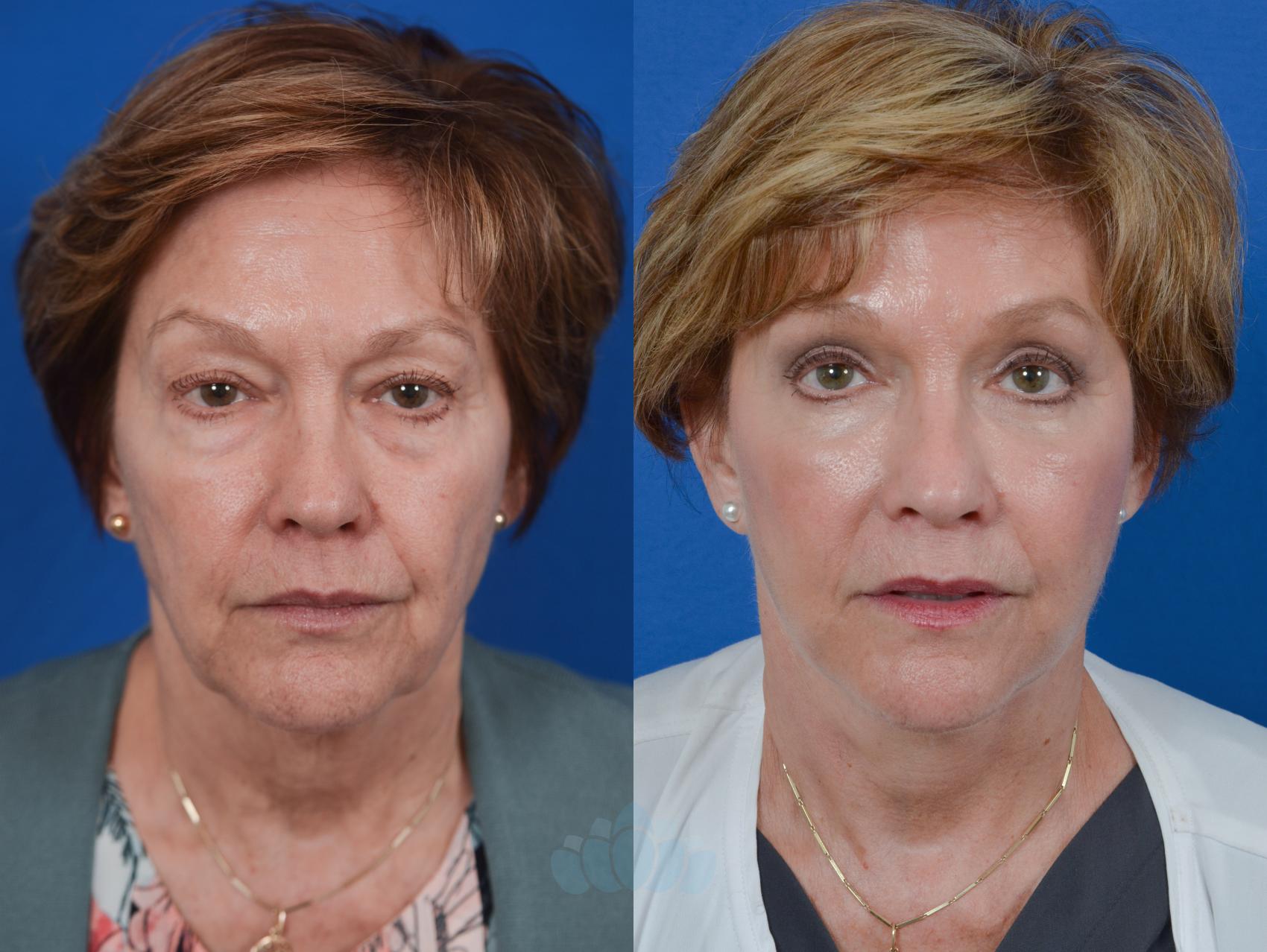When the delicate skin around your eyes starts to change, the solution isn’t always obvious. Maybe your eyelids feel heavy and makeup disappears into the folds, or perhaps the under eye bags are consistently present no matter how well you sleep.
If you’ve been researching eyelid surgery, you’ve likely come across the terms “upper blepharoplasty“ and “lower blepharoplasty.” But how do you know which one is right for you? In this guide, we’ll explore the 2 procedures so you can feel more confident about your next step.
What’s the Difference Between Upper and Lower Blepharoplasty?
Both procedures fall under the umbrella of blepharoplasty, or eyelid surgery, but they target different areas and concerns.
- Upper blepharoplasty removes excess skin from the upper eyelids. It can restore a more open, refreshed appearance and even improve your vision if sagging skin interferes.
- Lower blepharoplasty addresses puffiness, under eye bags, and skin laxity beneath the eyes. The goal is to create a smoother, more rested look.
Understanding the distinction is important—but what matters most is recognizing which signs apply to you.
What Are the Signs You May Need Upper Eyelid Surgery?
Surgery may be worthwhile if your upper lids affect your appearance or daily life. You may be a good candidate for upper blepharoplasty if:
- Your eyelid skin hangs down over your lashes.
- Your eyes appear tired, sad, or less alert.
- You struggle to apply makeup due to hidden creases.
- Drooping lids limit your peripheral vision.
Many people don’t notice how much their upper lids have changed until they see themselves in photos or experience minor daily frustrations. A simple in-office exam can quickly determine if surgery would help.
What Are the Signs You May Need Lower Eyelid Surgery?
Lower eyelid concerns are usually cosmetic, but that doesn’t make them any less frustrating. Lower blepharoplasty might be the right choice if:
- You have persistent under eye bags or puffiness.
- Your eyes look tired even after a good night’s sleep.
- Concealer creases, cakes, or doesn’t seem to help.
- You’ve noticed hollowing or dark circles forming.
These issues are often caused by fat pads shifting or becoming more prominent with age. Creams and fillers can only do so much. Lower eyelid surgery addresses the root of the problem for longer-lasting improvement.
Are you a good candidate for blepharoplasty?
Can You Do Upper and Lower Blepharoplasty at the Same Time?
Yes, and it’s often the best approach. If you’re seeing signs of aging both above and below the eyes, combining upper and lower blepharoplasty can create a balanced, harmonious result.
There are also practical benefits:
- Convenience: One surgery, one recovery
- Cost-effectiveness: May reduce total expenses compared to staging surgeries separately
- Enhanced results: Avoids a “mismatched” appearance
The best way to know whether you need upper blepharoplasty, lower blepharoplasty, or both is to consult one of our dual board-certified facial plastic surgeons.
Learn more about eyelid surgery recovery.
Find Out What’s Right for You
If you’re considering blepharoplasty or have questions, we invite you to call Dilworth Facial Plastic Surgery at (980) 949-6544 or request a consultation using our online form.












Leave a Reply